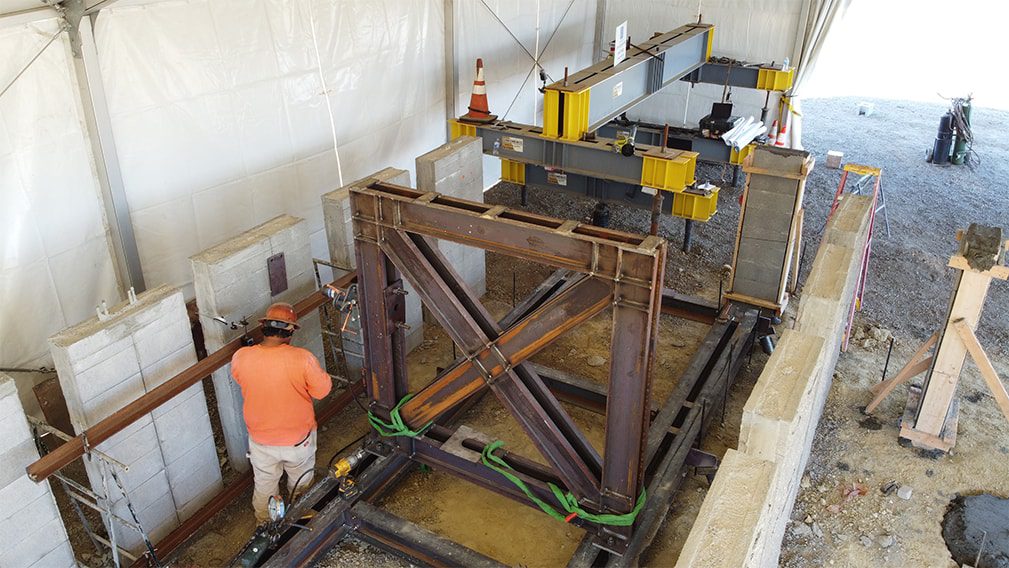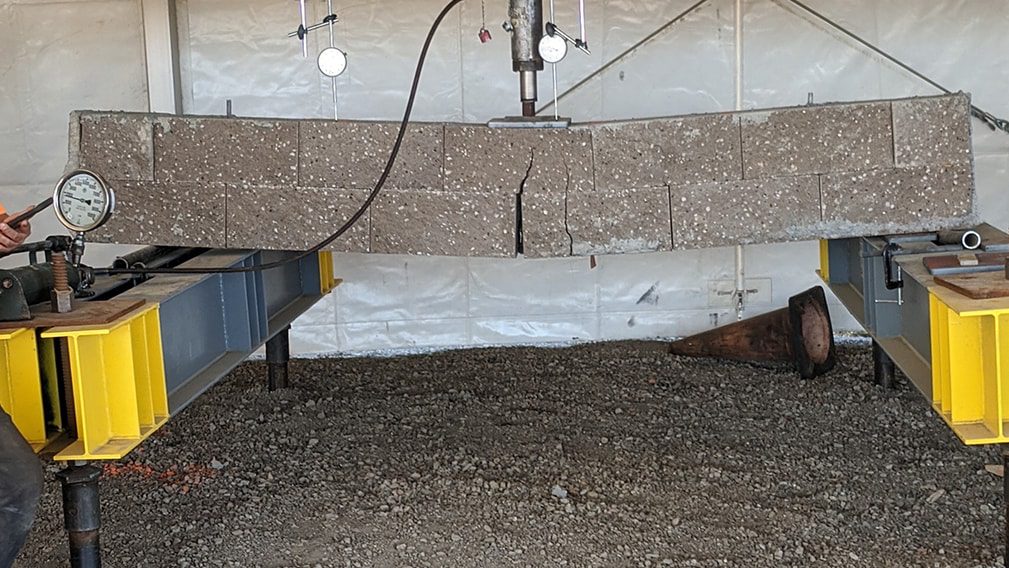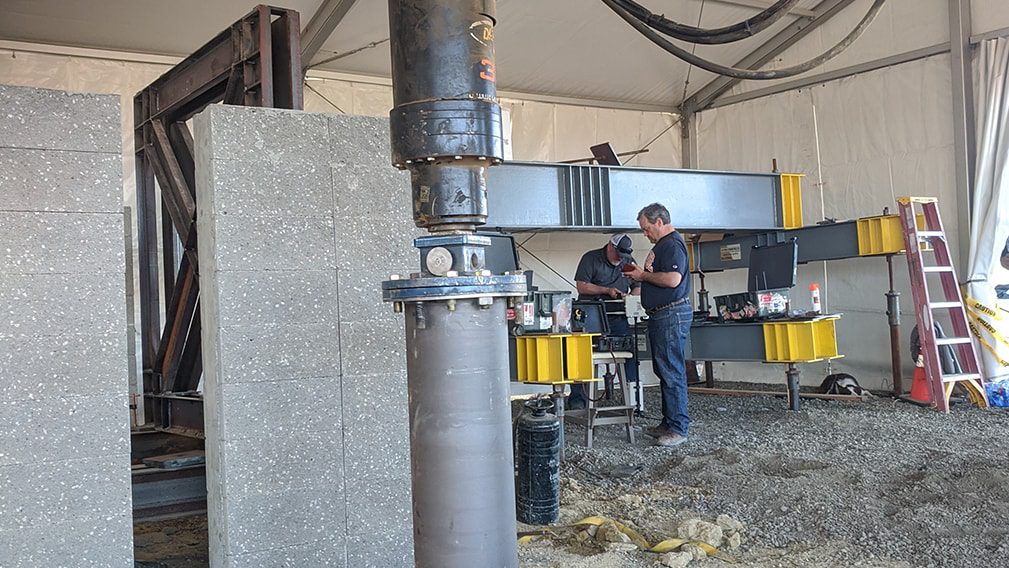Engineered To Perform
Born from multiple generations of experience designing and building retaining walls in California’s geologically challenging terrain, GS2 Block was designed to outperform traditional solutions.
Purpose-built Testing Site
To validate the engineering behind GS2 block, we built a test site to construct and load-test sections of wall using common block types.
Under the shelter of a large steel-framed tent, we constructed a sliding steel-frame that could be positioned adjacent to various constructed wall faces while providing the structural stability required to exert the level of force necessary to create controlled failures. Each step of the process was carefully measured, documented, and repeated numerous times.

Stress Tested
Stand-alone wall sections were constructed using common types of commercial retaining wall blocks. These sections were stress-tested to the point of controlled failure. Walls were tested at their mid-points to measure the strength of the face and internal bond beams. Additionally, foundationally-anchored walls were tested with facing loads applied near the top to simulate extreme material retaining conditions.

Independently Verified
Independent geotechnical and engineering consultants were brought in to assist with the testing process and interpretation of data. The structural engineering team from Lyver Engineering and Design consulted on the testing methodology and are compiling an independent report on the results. We plan to leverage this data for the continuous improvement of our construction process and applications of GS2 Block.
The data we’ve compiled shows a clear structural advantage in the GS2 Block design due to the bi-lateral bond beams. Details of the process and associated data sets are being made available to strategic partners and manufacturers. Please contact us for additional information about data sharing.

